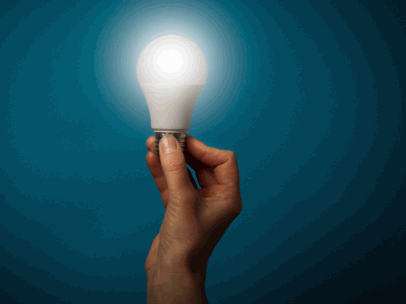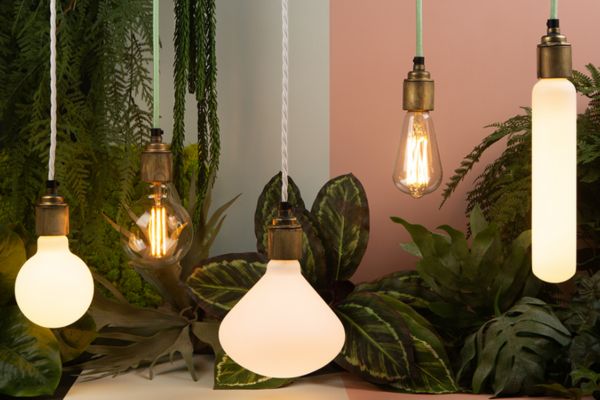
LED lighting has revolutionized the way we illuminate our spaces, offering numerous benefits such as energy efficiency, long lifespan, and cost savings.
It is crucial to consider its environmental impacts and sustainability as we embrace this technology.
We will explore the benefits of LED lighting, its environmental impacts, concerns about sustainability, and how we can make LED lighting more sustainable through the use of recycled materials, proper disposal, and energy-efficient manufacturing processes.
Join us as we delve into the world of LED lighting and its sustainability.
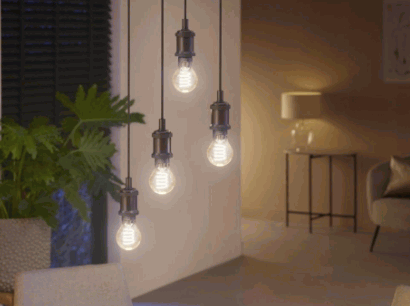
Table of Contents
LED lighting, or Light-Emitting Diode lighting, is an advanced technology in the field of illumination that offers significant energy efficiency and environmental benefits compared to traditional lighting sources.
LEDs operate by converting electricity into light efficiently, resulting in less heat production and longer lifespan than incandescent or fluorescent bulbs. LED lighting is highly customizable, allowing for varied color options and brightness levels to suit different settings and preferences. The durability of LED lights makes them ideal for both indoor and outdoor applications, ranging from residential lighting to commercial and industrial use.
One of the key advantages of LED technology is its eco-friendliness; LEDs do not contain harmful substances like mercury that are present in traditional lighting options, reducing environmental impact and making them easier to dispose of responsibly.
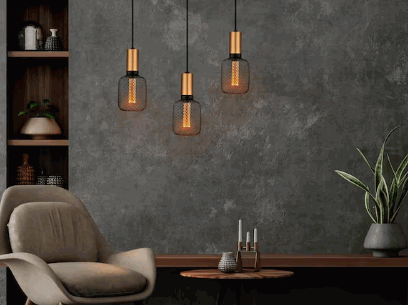
LED lighting operates by the movement of electrons in semiconductors within the LED bulb, which produces light emission through a process known as electroluminescence.
When electricity is applied to the semiconductor material in an LED bulb, it causes the electrons to move between the conduction and valence bands. This movement of electrons results in the release of energy in the form of photons, creating light emission. The unique property of LEDs is that they emit light in a specific direction, unlike traditional incandescent bulbs which emit light in all directions. This directional emission significantly enhances the efficiency of LED lighting, as there is minimal wasted light. The semiconductors used in LEDs are carefully chosen to optimize the conversion of electricity into light, making LED bulbs incredibly energy-efficient.
Uncover more: How To Install Retrofit Lights
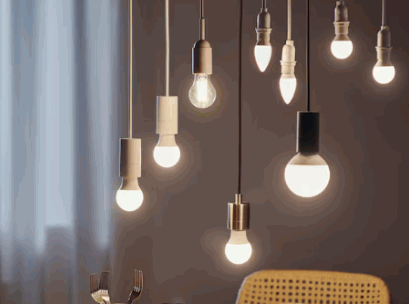
LED lighting offers a multitude of benefits, including unparalleled energy efficiency, long lifespan, substantial cost savings, and significant environmental advantages over traditional lighting solutions.
One of the key advantages of LED lighting is its unmatched energy efficiency. LEDs consume significantly less energy compared to traditional incandescent or fluorescent bulbs, translating to lower electricity bills and reduced environmental impact. The long lifespan of LEDs means less frequent replacement, saving both time and money in the long run. This durability not only contributes to cost-effectiveness but also reduces the amount of waste generated from discarded light bulbs.
One of the key advantages of LED lighting is its exceptional energy efficiency, which significantly reduces energy consumption and the strain on power plants, resulting in substantial energy savings.
LED lights use less energy compared to traditional incandescent bulbs, converting a higher percentage of electricity into light rather than heat. This efficient energy transformation not only benefits the environment by reducing carbon emissions but also translates into cost savings for consumers. The impact of this energy-efficient lighting technology goes beyond individual households; widespread adoption of LED lighting across industries, commercial spaces, and public infrastructure contributes to a substantial decrease in overall energy consumption on a global scale.
LED lighting boasts an extended lifespan compared to traditional light bulbs, providing durable and long-lasting illumination solutions that require minimal maintenance and replacements.
LED technology enhances the longevity of lighting fixtures by incorporating solid-state components that are highly durable and resistant to shocks and vibrations.
Due to their long life expectancy, LED bulbs significantly reduce the frequency of replacements, making them a cost-effective choice for residential and commercial lighting needs.
The energy-efficient nature of LEDs contributes to their extended lifespan, ensuring sustainable and reliable lighting solutions for years to come.
LED lighting presents significant cost savings opportunities for users, especially for event organizers seeking cost-efficient lighting solutions that reduce maintenance costs and offer long-term financial benefits.
By implementing LED lighting solutions, event organizers can not only enjoy immediate energy cost savings due to the high energy efficiency of LEDs but also benefit from reduced maintenance expenses. The longevity of LED lights means fewer replacements and lower maintenance costs over time, translating into substantial financial advantages. The durability of LED fixtures minimizes the need for frequent repairs, contributing to a more reliable lighting system for events.
LED lighting stands out for its environmental friendliness, contributing to a reduced carbon footprint, increased eco-friendliness, and lower greenhouse gas emissions compared to traditional lighting sources.
LED technology consumes significantly less energy than conventional incandescent bulbs, translating into tangible reductions in CO2 emissions and energy usage. This is a crucial factor in combating climate change and promoting sustainability. Additionally, LED lights have a much longer lifespan, reducing the frequency of replacements and consequently minimizing waste generation. All these aspects combined make LED lighting a prime choice for those looking to make a positive impact on the environment through their lighting choices.

LED lighting has notable environmental impacts, including reduced energy consumption, lower carbon emissions, and a positive contribution to sustainability efforts compared to traditional lighting technologies.
One of the key advantages of LED lighting is its ability to consume significantly less energy than traditional lighting sources. This reduced energy consumption not only results in cost savings for consumers but also plays a vital role in reducing overall energy demand and dependence on fossil fuels. By emitting less heat and using energy more efficiently, LED lights help cut down on greenhouse gas emissions, lowering carbon emissions and contributing to global efforts to combat climate change. The longevity and durability of LED bulbs mean fewer resources are required for replacements, enhancing the sustainability of lighting systems in the long run.
LED lighting significantly reduces energy consumption through its efficient technology, leading to lower energy costs and reduced usage of traditional lighting fixtures that contribute to energy wastage.
LED lighting not only helps in decreasing electricity bills but also plays a crucial role in conserving energy resources. By replacing outdated lighting systems with LED fixtures, businesses, and households can achieve remarkable savings in their energy expenditures. The long lifespan of LED bulbs reduces the frequency of replacements, further lowering the overall energy consumption. This shift towards sustainable lighting solutions not only benefits the environment by reducing carbon emissions but also enhances the quality of light for better visibility and comfort.
LED lighting plays a significant role in reducing carbon emissions by minimizing the environmental impact of manufacturing processes, transportation, and overall energy consumption compared to traditional lighting methods.
Manufacturing sustainability is a key aspect when it comes to reducing carbon emissions. The production of LED lights involves fewer harmful chemicals and materials, leading to a lower carbon footprint during the manufacturing process. LED lighting is highly energy-efficient, requiring less electricity to function, which contributes to a decrease in greenhouse gas emissions. The longevity of LED lights reduces the need for frequent replacements, further reducing the environmental impact associated with manufacturing and transportation.
LED lighting promotes waste reduction by being recyclable and minimizing landfill waste, thus reducing environmental impact, especially in terms of packaging materials and end-of-life disposal.
LED lights are designed to be more environmentally friendly throughout their lifecycle. By using materials that can be repurposed, LED lighting contributes to a more circular economy.
In terms of disposal, the recyclability factor of LEDs leads to a significant reduction in the amount of waste ending up in landfills. This also plays a crucial role in minimizing the negative effects of hazardous substances that may be found in traditional lighting options.
The sustainable disposal methods associated with LED technology ensure that at the end of their life, these products can be properly handled to avoid further harm to the environment.
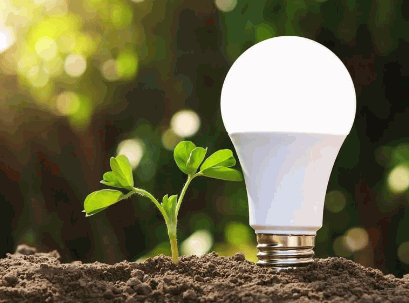
While LED lighting offers numerous benefits, there are concerns regarding its sustainability, particularly related to the manufacturing process, disposal, and potential health risks associated with certain components.
LED lighting has gained popularity for its energy efficiency and long lifespan, contributing to reduced electricity consumption and lower carbon emissions. However,
Manufacturing Sustainability
is a critical consideration. The production of LEDs involves the use of materials such as rare earth elements and metals that require significant amounts of energy and resources.
Disposal Issues
arise due to the presence of toxic substances like lead and arsenic in LED bulbs, which can pose environmental hazards if not properly managed.
Potential Health Risks
associated with blue light emissions from LEDs, may disrupt sleep patterns and affect eye health.
The manufacturing process of LED lighting raises concerns due to its environmental impact, including carbon emissions and the use of materials like mercury in semiconductor production.
LED lighting manufacturing involves several stages that contribute to its environmental impact. To begin with, the production of LED chips requires the use of highly toxic materials such as arsenic and gallium. The refinement and processing of these materials can result in the release of harmful substances into the environment. The energy-intensive nature of the manufacturing process leads to significant carbon emissions, further exacerbating the industry's environmental footprint.
The disposal of LED lighting products poses challenges in terms of proper waste management, recycling practices, and transportation logistics to minimize the environmental impact of end-of-life disposal.
When LED lighting products reach the end of their lifecycle, the responsibility of managing their disposal falls on both consumers and businesses alike. Proper waste management is vital to prevent these products from ending up in landfills where they could release harmful chemicals into the environment.
Initiating recycling programs can help recover valuable materials from these products and reduce the demand for extracting new resources. Efficient transportation of discarded LED products to recycling facilities is crucial in reducing the overall carbon footprint associated with their disposal.
Concerns about potential health risks associated with LED lighting stem from certain semiconductor materials used in the production process, raising questions about their impact on human health and well-being.
LED lighting, known for its energy efficiency and longevity, relies on semiconductor components such as gallium nitride and arsenic for its operation. These materials, while essential for the performance of LEDs, have been linked to various health hazards.
Exposure to blue light emitted by LEDs has been associated with disrupted sleep patterns and potential eye strain. Prolonged exposure to certain semiconductor elements in LED lighting may pose a risk of toxicity and environmental contamination.
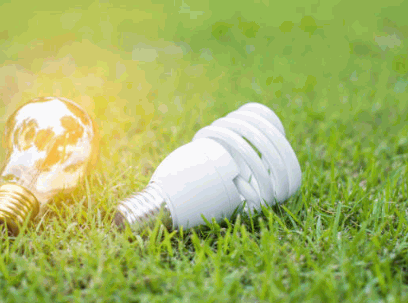
To enhance the sustainability of LED lighting, measures such as using recycled materials, implementing energy-efficient manufacturing processes, and ensuring proper disposal and recycling practices are essential.
Considering the environmental impact of conventional lighting options, it is crucial to shift towards sustainable practices in LED production. By utilizing recycled materials in the manufacturing of LED bulbs, the demand for new resources can be minimized, reducing the strain on the environment. Adopting energy-efficient production methods not only lowers operational costs but also decreases carbon emissions, making the entire process more sustainable.
Effective waste disposal practices play a significant role in the lifecycle of LED lighting. Implementing recycling programs for used or damaged LED products ensures that valuable materials are not wasted but instead can be repurposed for new products, promoting a circular economy approach. By prioritizing these strategies, the LED lighting industry can make a substantial impact on sustainability and energy efficiency.
Utilizing recycled materials in the production of LED lighting, such as Arcadia using Compact Fluorescent Lamps (CFLs) for components, can significantly enhance the sustainability of the lighting solutions.
Recycled materials offer a myriad of advantages beyond just environmental benefits. By repurposing CFLs in the manufacturing process, companies can reduce waste and decrease the demand for new raw materials, ultimately lowering their carbon footprint. Incorporating recycled components into LED lighting helps conserve energy, as it requires less energy to reuse existing materials than to create new ones from scratch.
Establishing proper disposal and recycling systems for LED lighting can mitigate environmental impact, reduce landfill waste, and promote sustainable practices, as seen in initiatives like those in Pittsburgh.
Efficient disposal and recycling mechanisms play a crucial role in reducing the carbon footprint and conserving valuable resources. By responsibly managing end-of-life LED products, organizations contribute to the circular economy and uphold their commitment to environmental stewardship. Implementing waste reduction practices not only minimizes the ecological repercussions of improper disposal but also fosters a culture of sustainability. Recycling initiatives ensure that valuable materials are salvaged and reused, further bolstering the shift towards a more sustainable future.
Adopting energy-efficient manufacturing processes in the production of LED lighting, such as Lumens replacing high-pressure sodium lamp streetlights, can enhance sustainability and reduce energy consumption.
Implementing sustainable practices not only benefits the environment but also positively impacts long-term operational costs for companies in the lighting industry. By investing in energy-efficient technologies like LEDs, manufacturers like Lumens are setting a precedent for others to follow in the quest for greener production methods. Utilizing state-of-the-art equipment and optimizing manufacturing processes can significantly reduce greenhouse gas emissions and lower energy usage, contributing to a cleaner and more resource-efficient planet.
Addressing potential health risks associated with LED lighting requires proper management practices, especially in comparison to hazardous materials found in traditional lighting sources like incandescent light bulbs available at Home Depot.
One of the key concerns with LED lighting is the emission of blue light, which has been linked to disruptions in sleep patterns and potential damage to the eyes. Unlike incandescent bulbs, which emit a softer, warmer light, LEDs tend to produce a higher intensity of blue light, making them more straining on the eyes over extended periods. LED lights can contain small amounts of toxic substances like lead and arsenic, requiring careful handling and disposal to prevent environmental contamination.
